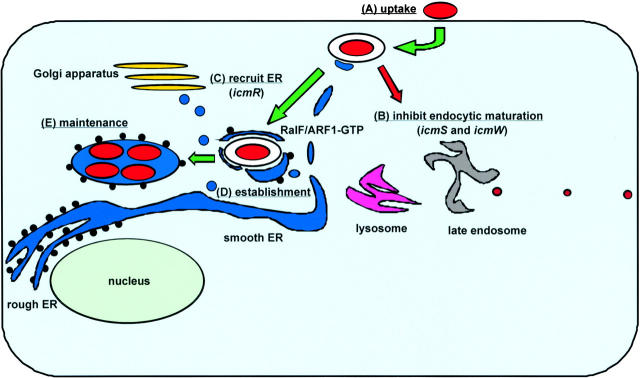Figure 1.
Transport of a phagosome-containing Legionella to the ER. (A) Legionella resides in a plasma membrane-derived phagosome after macrophage internalization. (B) The Dot/Icm secretion system sends a signal that inhibits the fusion of endocytic organelles with the phagosome-containing Legionella. The icmS and icmW products play specific roles in this event. (C) The phagosome-containing Legionella recruits ER vesicles by a process that requires the icmR product. ER vesicles are seen attached to the phagosome-containing Legionella shortly after uptake. At this time, the RalF protein is being injected into host cells by the Dot/Icm secretion system. RalF activates the host protein ARF1, and ARF1–GTP begins to accumulate on this phagosome. (D) Legionella has established a vacuole with ER vesicles covering its surface. (E) An ER-like vacuole studded with ribosomes is created by Legionella, and it is within this organelle that bacterial replication is observed. Maintenance of this vacuole does not require continuous signaling by the Dot/Icm secretion system (Coers et al., 1999), suggesting that host factors involved in ER biogenesis are providing these functions.

